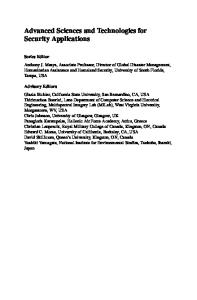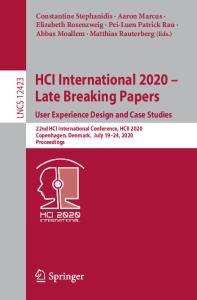StimuliApp: Psychophysical tests on mobile devices
- PDF / 636,240 Bytes
- 7 Pages / 595.276 x 790.866 pts Page_size
- 69 Downloads / 354 Views
StimuliApp: Psychophysical tests on mobile devices Rafael Marin-Campos 1 & Josep Dalmau 1,2,3,4,5 & Albert Compte 1 & Daniel Linares 1,2 Accepted: 22 September 2020 # The Author(s) 2020
Abstract Psychophysical tests are commonly carried out using software applications running on desktop or laptop computers, but running the software on mobile handheld devices such as smartphones or tablets could have advantages in some situations. Here, we present StimuliApp, an open-source application in which the user can create psychophysical tests on the iPad and the iPhone by means of a system of menus. A wide number of templates for creating stimuli are available including patches, gradients, gratings, checkerboards, random-dots, texts, tones or auditory noise. Images, videos and audios stored in files could also be presented. The application was developed natively for iPadOS and iOS using the low-level interface Metal for accessing the graphics processing unit, which results in high timing performance. Keywords Open source software . Psychophysics . Stimuli . Mobile . Smartphone . Tablet
Introduction Psychophysical tests that present stimuli and record responses accurately are essential for studying perception and cognition. They are commonly carried out using software applications running on desktop or laptop computers, but running the software on mobile handheld devices such as smartphones or tablets could be advantageous in some situations. First, their small size and weight could facilitate their use outside the laboratory in places such as clinical environments (Kalia et al., 2014; Bastawrous et al., 2015; McKendrick, Chan, Vingrys, Turpin, & Badcock, 2018; Linares et al., 2020). Second, their touchscreen interface could facilitate their use by people with little experience with more traditional
* Rafael Marin-Campos [email protected] * Daniel Linares [email protected] 1
Institut d’Investigacions Biomèdiques August Pi i Sunyer (IDIBAPS), Barcelona, Spain
2
Centro de Investigación Biomédica en Red de Enfermedades Raras (CIBERER), Barcelona, Spain
3
Hospital Clinic, University of Barcelona, Barcelona, Spain
4
Catalan Institution for Research and Advanced Studies (ICREA), Barcelona, Spain
5
Department of Neurology, University of Pennsylvania, Philadelphia, PA, USA
computers. Third, the large number of people owning them, and the ease of installation of applications from common repositories for these devices, could help in the collection of data online. Fourth, they are generally less expensive than desktop or laptop devices. Psychophysical tests have been carried out on mobile devices with custom applications that implement specific tests such the assessment of visual acuity (Black et al., 2013), contrast sensitivity (Dorr, Lesmes, Lu, & Bex, 2013; RodríguezVallejo, Remón, Monsoriu, & Furlan, 2015; Kollbaum, Jansen, Kollbaum, & Bullimore, 2014), chromatic contrast sensitivity (Bodduluri, Boon, Ryan, & Dain, 2018) or stereoacuity (Rodríguez-Vallejo, Ferrando, Montagud, Monsoriu, & Furlan, 2017), or using an
Data Loading...











